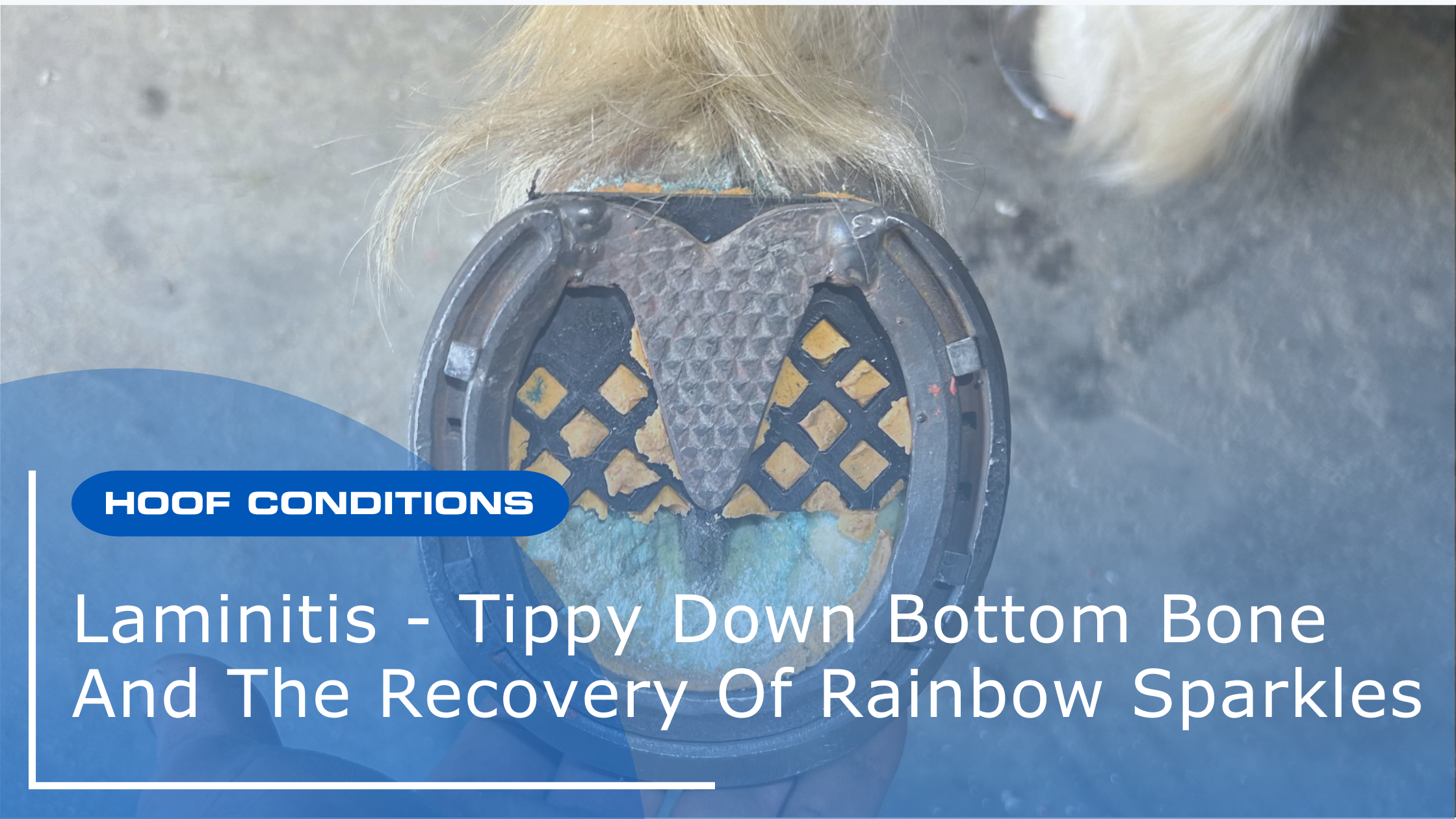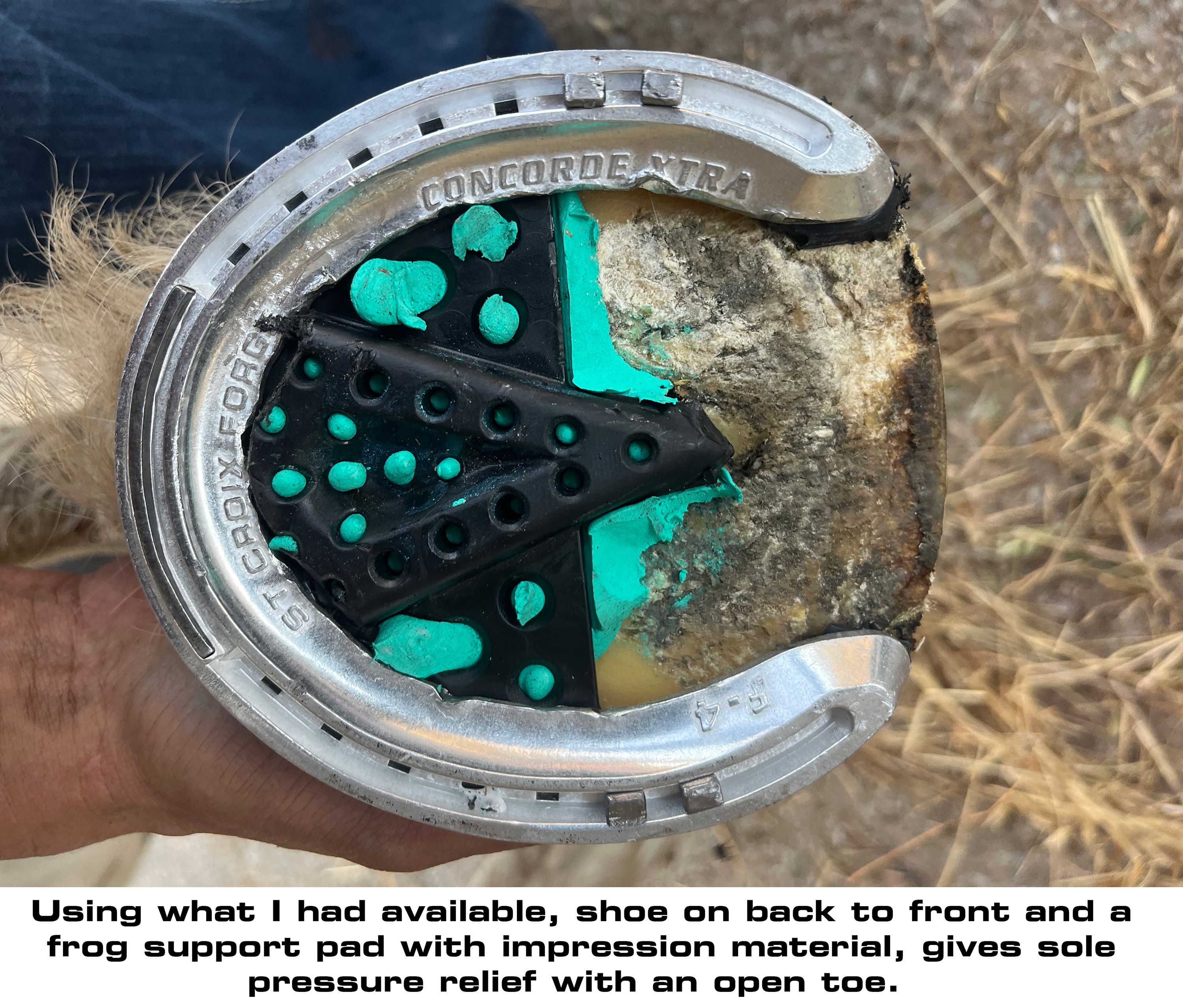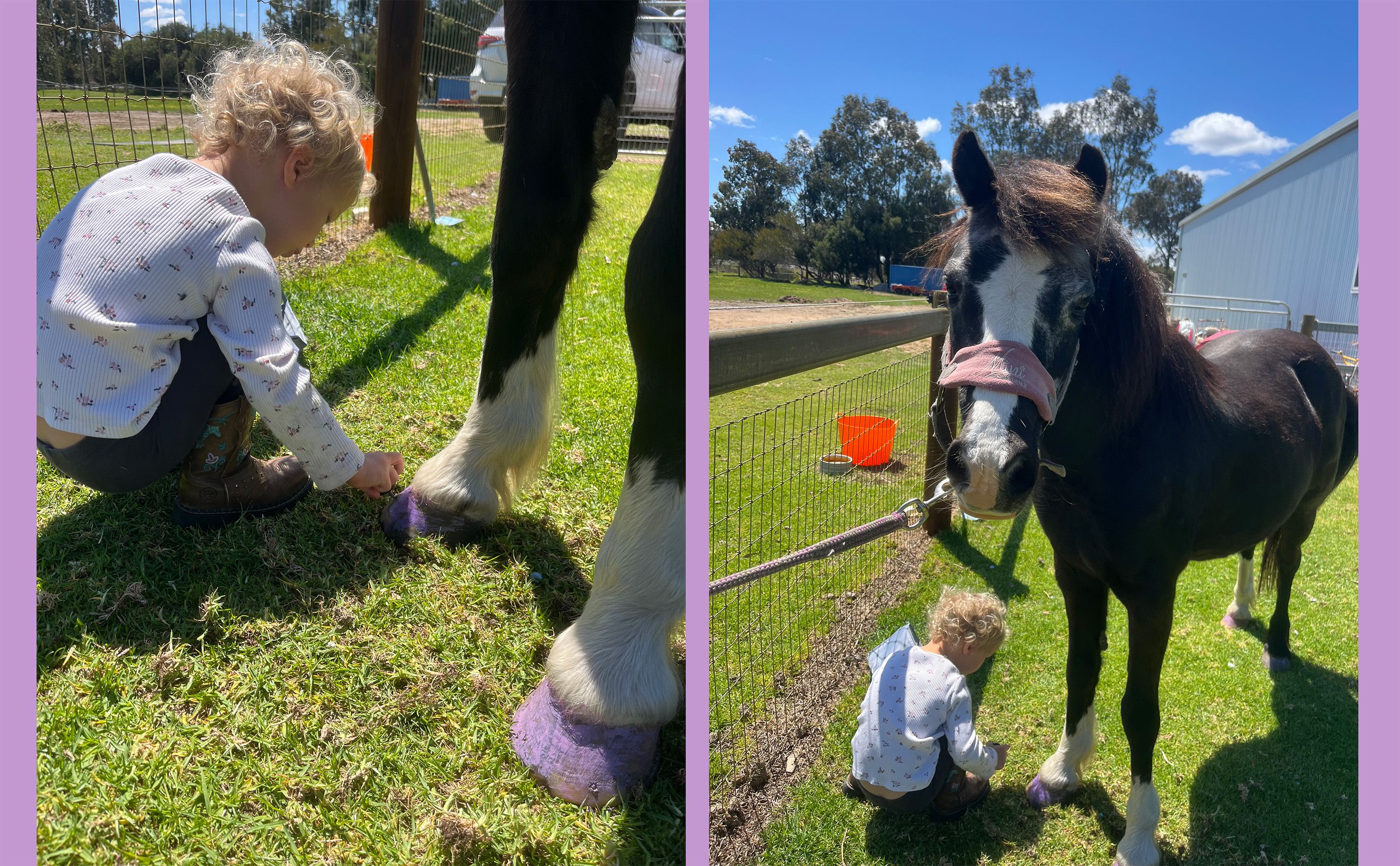Laminitis - Tippy Down Bottom Bone And The Recovery Of Rainbow Sparkles
Laminitis a.k.a tippy down bottom bone. (See tippy up bottom bone for more info on negative palmer angles) is a painful inflammation and degradation of the interdigitation between the dermal and epidermal lamina.
The Impact Of Laminitis
Firstly, I have done a wonderful job of keeping this a secret from absolutely everyone so far. However, shamefully… I have to admit that we are the owners of a laminitic pony. Currently laminitic at that. I feel like that’s as if your dentist tells you mid appointment, drill in hand, that all their own kid’s teeth have rotted out from cavities. Doesn’t fill you with confidence.
Laminitis IS a clinical emergency. It’s the second biggest killer of horses after colic.
You can’t just get a ‘touch’ of laminitis. You either have it, or you don’t. I’ve said it so many times, in an attempt to fool both Mrs Smith and myself into thinking that her little pony ‘Rainbow Sparkles’ isn’t quite as bad as it looks. But it’s not like navicular where you might start off with the basics, see what works and figure it out slowly from there. The quicker you intervene, the better. Throw everything at it! Help the poor sausage out. Its feet are falling off.
Horses and ponies are extremely resilient animals who are able to adapt and overcome all sorts of challenges, including laminitis. But just because they’re stoic doesn’t mean they aren’t suffering, in pain or going through some serious changes. So it’s critical that we do as much as we can to help them.
Types Of Laminitis
Laminitis can be either systemic (something is happening within the body) or mechanical (outside influences). Examples of systemic are cushings (PPID), EMS, ‘grass founder’, retained placenta, grain overload, or toxins. Examples of mechanical could be road founder, neglect or direct trauma. All of these different pathways can lead to the same end point, with the different stages listed below:
Developmental – 40-48hrs before clinical signs are noticed.
Acute – first signs of pain. No P3 changes.
Acute Founder – active laminitis, P3 has moved.
Chronic, type 1 – non active laminitis – P3 has moved but no demineralisation.
Chronic type 2 – non active laminitis – P3 has moved, P3 demineralisation.
Sinker – P3 is completely loose within the hoof capsule.
It is important to note that our work cannot be truly affective without addressing the root cause. If we apply the appropriate shoeing packing to Rainbow Sparkles, but it’s still getting turned out in knee high clover with free access to the feed room, your chances of success drop dramatically.
Treating Laminitis
Gather Your Team
With any case, request that the vet is involved ASAP. This isn’t just for x-rays and blood tests. Laminitis can turn ugly quickly. At the end of the day, it’s the vet that makes the bad and nasty decisions, all you can do is provide informed opinions. So when it all gets ugly, at least you’ve got the vet there who’s obliged (and paid!) to make and deal with those nasty and ugly situations. Not you. Added bonus though, when it all goes well – you’ll always look like the good guy!
People might be reluctant to dive in and have x-rays done. Even if what you see on an x-ray isn’t going to change your shoeing plan / package, having x-rays gives you a baseline to work from in the future for all possible rotation or founder, otherwise you’re just guessing. And guessing can be a very dangerous thing to do.
How X-Rays Help
X-rays will show you founder distance, gas pockets, sole depth, rotation and any demineralisation of P3. Markers are usually put on the dorsal hoof way, either a piece of wire, nail or drawn on with radiopaque fluid to be able to compare the dorsal hoof wall with the dorsal wall of P3.
Deviations And Rotation
Any deviation away from parallel can be considered as rotation. This could be capsular rotation – P1, P2 and P3 all look in perfect alignment, but the hoof capsule is shooting off into nowhere having its own adventure OR rotation of P3. You can have the most beautiful looking hoof capsule and HPA (hoof pastern axis) but on the inside, P3 has nose-dived and is trying to find a sneaky exit out of the bottom of the hoof. Not cool.
Gas Pockets
Gas pockets show serum or gas build up, a sign of necrosis and complete separation of P3 from the hoof wall. A skyline shot can be a good one to see how far around the hoof this extends.
Founder Distance
Founder distance - Founder meaning a sunken ship. A quick look at a foundered x-ray might lure you into breathing a sigh of relief. No rotation. Wonderful. Until you see the founder distance is 10mm. Not the usual 2-4mm ish. So then we know that things are..well..pretty bad. P3 is completely loose within the hoof capsule.
Assessing Load
Something that I think of every time I shoe a horse, regardless of how healthy that hoof is - what structures are currently capable of taking weight? This is especially crucial for a laminitic horse. With the massive destruction of critical structures, we aren’t really left with many other options other than correct frog support and palmer / plantar packing.
Shoeing For Recovery
You can achieve this in a billion different ways. It doesn’t matter how you get it done, as long as it works.
 |
Heartbar HorseshoesProper heartbar placement is essential to aid a laminitic horse. Having the tip of the heart piece fitted in the correct position ensures optimal effectiveness. Too far back and you may encourage further rotation, too far forwards and you may crush or shear important vascular structures. Poor Rainbow Sparkles has already lost a lot of his vasculature, so let’s not make this worse for him! This is where good radiographic markers and a sound knowledge of external hoof markers for internal structures comes in. I’ll pop a drawing pin in, roughly 3/8” behind the point of frog – about where I think I’ll want to fit the tip of my heart piece to, then when it shows up on the x-ray I can see how much I need to adjust it. Environmental SupportFirst aid might be not doing anything at all! Removing shoes, trimming or making the horse stand on one foot to lift the other could all cause more damage than good. In this scenario you might want to chuck Rainbow Sparkles in a box or stable with deep sand / shavings. This will pack up into the hoof and give that frog support that we need without tearing off its feet in the process of shoe removal. |
Dental Impression Material
If I have nothing in the car, I’ve used a big blob of dental impression and duct-taped it onto feet before coming back with more gear. If you don’t have dental impression, use a bandage or some rolled up fabric to place over the frog and tape that on to act as frog support.
Custom ShoeingThe Mustad Equi-librium Aluminium Heartbar is the easier prefabricated shoe to shape with the frog piece gap down the back, but keeping heartbar inserts in stock mean often that you don’t even have to make a new shoe for the horse. Just weld in an insert, super easy. If you don’t have an insert, chop one out of an old rasp, failing that a frog support pad. Using dental impression material or a pour in pad ensures we’re getting optimal palmer / planter support. Alternative ApplicationsNailing a shoe on can be very painful, so you don’t have to make the traditional heartbar your go to gig. Or do, but glue / cast it on! There is such a fantastic array or modern materials now that you can pretty much build or make anything you want. Deformable pads and styrofoam blocks allow the horse to self-wedge to a degree where they are most comfortable without forcing our own ideas onto it. Clogs, boots and thermoplastics are all great options too. |
 |
Whatever you do, do it with care and thought and remember that Rainbow Sparkles is somebody’s very much loved fur baby. But if all else fails... get your toddler to paint its feet purple.



